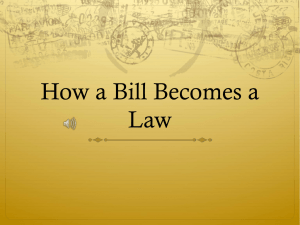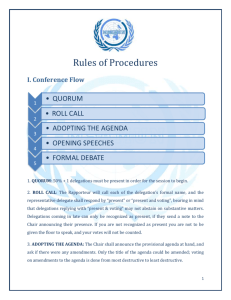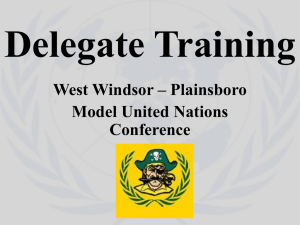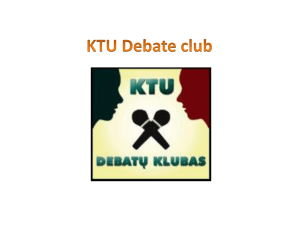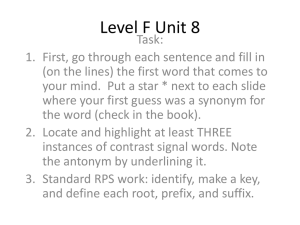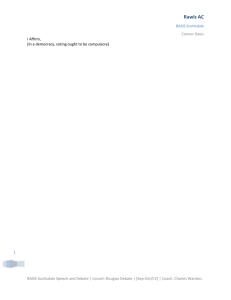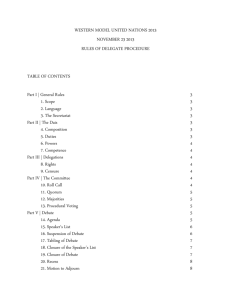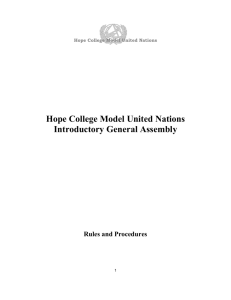Rules Overview
advertisement
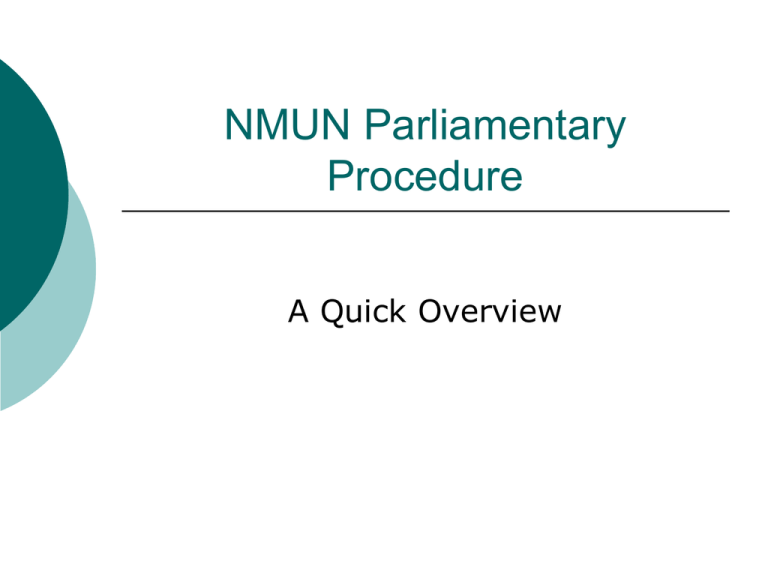
NMUN Parliamentary Procedure A Quick Overview Outline Why Rules? Rules for Debate Rules for Voting Why Rules? Increase Efficiency Increase Productivity Protect Civility Encourage Equality and Fairness Rules for Debate Getting Started If you miss your call, send a note to the dais Make sure you are on time! Meetings begin with roll call When country is called, you can answer one of two ways: Present (can abstain from voting) Present and Voting (must cast vote) In your note to the dais, be sure to indicate your status Rules of Debate Try to keep the casual talk to a minimum Debate begins when a motion is on the floor To make a motion, or to speak at all, you need to be recognized by the chair The chair will recognize you by calling your country by name Raise your placard No recognition =and nohold speaking it high until recognized Rules of Debate UN rules differ from Robert’s Rules in certain key respects At the NMUN you have 2 sorts of debate: Formal Informal Most of your time and most of your work will be done in informal debate Formal Debate At the start of formal debate, chair will ask members who wish to speak to place their names on a speaker’s list The basic “debate” is a series of short speeches Speakers list can be closed by a motion from the floor Speaking limited time is Speakers unlimited, unless to one speech set by until fullmotion list is to cycled limit through Formal Debate Speaking of motions… NMUN motions possible for: Amendments Division of Question Suspension of Meeting Adjournment of Meeting Open/Close Speaker’s List Friendly amendments have the consent of all sponsors to the resolution Amendments are “friendly” or “unfriendly” Unfriendly amendments lack the consent of all sponsors Informal Debate Most of the work of the meeting will be done in informal “caucuses” Meet with delegates from related countries Work to: Draft resolutions Gather sponsors No real “rules” other than be diplomatic and politically savvy Voting Rules Committee moves into voting procedure when speaker’s list is exhausted When in voting procedure, all other committee work – including caucusing and freedom of movement into and out of the room – stops Voting Rules Variety of options for voting available: Raising of Placards Roll Call Remember, if you said you were “present and voting” you must cast vote on every vote (i.e., no abstention) Voting Rules Committee will consider amendments to the resolution before considering the resolution Chair determines order of amendments for consideration Voting Rules Also possible to “divide the question” Allows body to consider sections of resolution separately Order of division done at discretion of the Committee Chair
